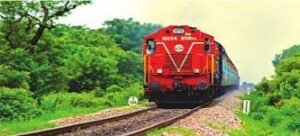A Study of Preventive Mechanisms in the Realm of Marine Pollution
Written By: Sreshta Satpathy
Understanding Oil Spillage
Oil is one of the world’s most important energy sources, and it is delivered by ships across oceans and pipelines across land due to its uneven distribution. Several mishaps have occurred in the past while transferring oil to vessels, during transportation, pipeline breaks, and drilling in the earth’s crust as a result of this. While huge and catastrophic spills get the most attention, smaller and chronic accidents happen all the time. These spills pollute the beaches and estuaries, as well as pose major health risks to humans.
Non-petroleum oils, such as vegetable oils and animal fats, are also becoming more popular in the United States. These oils may include hazardous components and have similar physical effects as petroleum oils. Non-petroleum oil spills are similarly hazardous to public health and the environment due to their poisonous characteristics and adverse physical impacts. Oils are frequently kept and transported in enormous amounts since we utilize so much of them.
Oils and other oil-based products are periodically spilt onto land or into rivers during storage or transportation, as well as a result of exploratory efforts. Human health and environmental quality are jeopardized when this happens. Oil spills must be avoided at all costs and cleaned up as soon as possible once they occur.
Controlling/Preventing Oil Spills
The first step in dealing with an oil spill is to prevent one from occurring. Bringing the ships to the port, passing through small waterways, and staying on the designated path for the journey often entails training the teams and following regular practices. In the event of a spill, different options are available depending on the size of the spill and its location. The methods for cleaning the sea after an oil spill are listed below:
Oil Booms- Because of their easy design and execution, oil booms are the most common and popular equipment used in oil clean-up. These are also known as containment booms, as they surround the oil in a smaller area to keep it from spreading. When the spill area is relatively small, this strategy is applied. It’s employed when containment booms are locally available; if the boom has to be hauled from afar, the spill can spread out and become difficult to control. It’s utilized on the water when the wave velocity is constant since the tide makes it impossible for an oil boom to do its job properly.
Dispersants- When oil cannot be contained by booms, the only remaining alternative is for it to disintegrate. Dispersants are chemicals that are sprayed on spilt oil to help it disintegrate. The surface area of oil molecules rises after breakdown, making it easier for them to form a bond with water. This action disperses the bound molecules deeper in the water, allowing bacteria to destroy them later. Hot water washing or washing with high-pressure water, human labour, bioremediation, and natural recovery are some alternative methods used for safer oil spill clean-ups from the sea.
Skimmers- With the use of skimmers or oil scoops, the oil can be easily recovered or skimmed once it is confined by oil booms. These skimmers are installed on boats to remove any oil or fatty impurities that may be floating around. Because the equipment for skimming oil is generally inexpensive, it is a cost-effective way of oil cleanup. The presence of debris in the limited zone can easily choke or clog the skimmer, which is a key flaw in the usage of skimmer in oil decantation.
Sorbents- Sorbents are materials that can absorb or absorb liquids. Using sorbents to clean up oil is a natural procedure. Peat moss, vermiculite (straw), and hay are the most popular sorbents. The following are some more characteristics of sorbents-These materials produce the least waste and prevent contamination from spreading. They’re great for little spills because they’re so efficient. They’re also utilized to get rid of tiny tints leftover from massive spill clean-ups. Working with sorbents is especially tricky because after absorbing oil, sorbents become denser than water and may sink to the sea’s bottom.
Oil spill prevention systems are made up of three main components: equipment, procedures, and personnel training. The manner in which they are administered varies depending on the probable spill source. The US Environmental Protection Agency requires regulated facilities to have Spill Prevention, Control, and Countermeasure (SPCC) plans in place to prevent oil spills into navigable waters and adjacent shorelines. Operators must identify and analyze potential spill dangers and prior spills, identify and ensure the availability of resources to minimize a worst-case discharge, and describe training, testing, unannounced drills, and reaction actions of individuals aboard the vessel or at the facility in such plans. For marine transportation-related facilities, the US Coast Guard has comparable criteria.
Apart from these building vessels with twin hulls to lessen the risk and severity of a spill in the event of a collision or grounding. Existing single-hull vessels can be rebuilt into double-hulled vessels, Secondary containment refers to strategies for preventing oil or hydrocarbon discharges into the environment, Blowout Preventer – a product that prevents a blowout from occurring, Castings for wells
Making ships safer;
- Crew members on ships must be well-trained and experienced.
- On board, strict fire safety standards apply
- Individual tanks on ships should be restricted in size to reduce spills
- To lessen the risk of collisions, vessel traffic control will be utilised in more busy regions.
Keeping the Navigator Updated;
- Weather forecasts that are updated on a regular basis
- For critical coastal areas and interior waterways, interpretation of radar and satellite image reports.
- A computer-based video display that allows navigators to follow the ship’s trajectory in respect to hazards and alerts them to potential dangers.
- Shipboard monitoring and control devices; oil-water combinations released can be traced back to the ship that carried the oil.
Risk Analysis; Identifying dangers and conducting a risk analysis of the specific activity, as well as putting in place risk-mitigation strategies, are all important steps in preventing oil leaks. Sharing Best Practices and Technology Development: It is extremely important to have easy access to knowledge on previous experience, best accessible technology, best practices, and the results of R&D projects.
Facilities: Oil and Gas: Oil and gas facilities and associated equipment should be properly winterized, certified for operations in sub-freezing temperatures and possible interaction with sea ice, and pipelines should have leak detection and in-line inspection systems.
Personnel with a high level of qualification and a desire to improve their skills on a regular basis are essential. To ensure the ability to work in distant places and the continual improvement of skill, a lack of competence and the necessity for comprehensive Arctic-specific training requirements were identified as demands.
Conclusion
While oil is an unavoidable risk in a complex society, recent and preventable big oil spills have proven that significant improvements in oil spill response are required to increase effectiveness. To prevent spills, the industry has implemented a variety of operating and maintenance measures. Despite rising oil production, transportation, and consumption, the rate of leakage has reduced in the last ten years. Despite this, experts estimate that human mistake is responsible for 30 per cent to 50 per cent of oil spills, with equipment failure or malfunction accounting for 20 per cent to 40 per cent of all accidents. Increased maritime activities in the Arctic, deepwater exploration and development, and the rapid expansion of crude oil rail transit are all emerging spill threats. Oil spills have a variety of negative consequences on the environment. Spill containment and recovery efforts, on the other hand, are thought to be only moderately effective. Most spilt oil strands on the beach, necessitate cleanup efforts, though caution is required to avoid further harm, which can hinder overall recovery.

Sreshta Satpathy
Student at Adv. Balasaheb Apte college of Law , Mumbai
I am 20 years old and I belong to Orissa. I’m currently a third-year student pursuing BLS LL.B from Mumbai University. I intend to pursue corporate law in the future.
References
- Oil Spillage Prevention, Control, And Restoration-State Of The Art And Research Needs Https://Www.Jstor.Org/Stable/25036275
- What is an Oil Spill at Sea: Drills, Prevention And Methods Of Cleanuphttps://www.marineinsight.com/environment/what-is-an-oil-spill-at-sea/
- Oil Spills: Causes, Consequences, Prevention, and Countermeasures https://www.researchgate.net/publication/301932090_Oil_Spills_Causes_Consequences_Prevention_and_Countermeasures
- OIL SPILL PREPAREDNESS, PREVENTION, AND RESPONSE ON THE ALASKA OCS https://www.boem.gov/sites/default/files/boem-newsroom/Library/Publications/2019/2019_0404_OSPRR_Final.pdf
- Marine safety Marine safety and pollution prevention from oil spills in the oil spills in the Arabian Gulf https://commons.wmu.se/cgi/viewcontent.cgi?article=2163&context=all_dissertations
Previous Posts
Delhi’s Air Pollution Governance
Laws For Prevention Of Animal Cruelty
Constitutional Amendments in India
The Crypto Currency and Regulation of Official Digital Currency Bill, 2021
Creative Commons: Impact On Indian Copyright Law
Keywords
Marine Pollution, Study of Marine Pollution, Preventive Mechanisms of Marine Pollution, Realm of Marine Pollution




